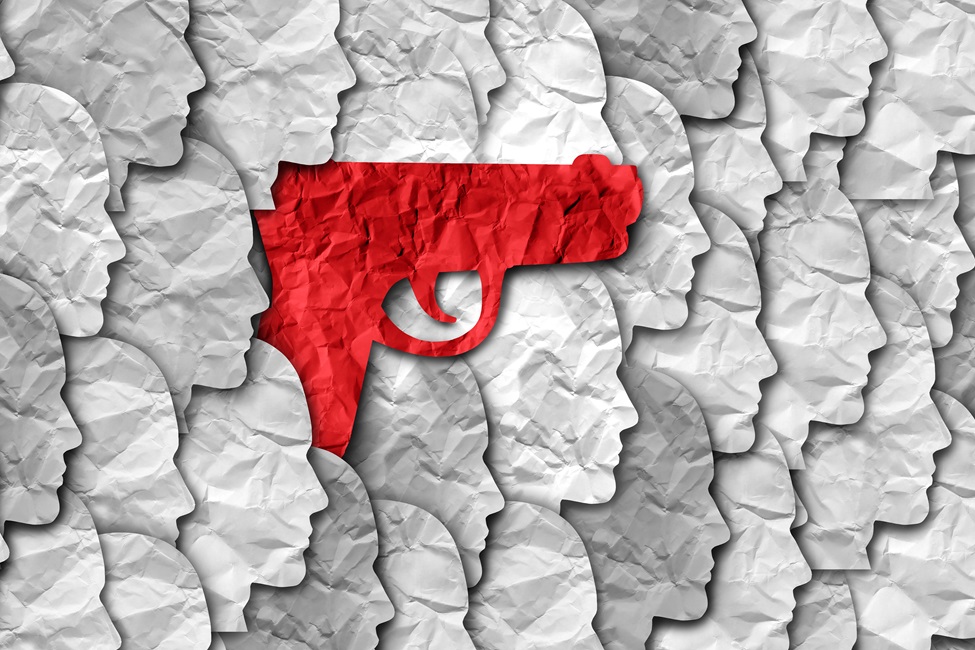Comparing Mental Illness, Gun Violence in the U.S., Australia and U.K.

Mental illness rates were 15.7 percent in the U.S., 17.6 percent in Australia and 13.8 percent in the U.K. in 2019. Yet, the U.S. had 10 times higher death rates from gun violence than Australia and 40 times higher death rates than the U.K.
Considerable attention has focused on mental illness as a major contributor to homicides in the United States. Serious mental illness affects more than 14 million Americans ages 18 and older and nearly 58 million people reported having a mental illness.
In 2021, 47,286 Americans died from gun violence – the highest ever – of which 46 percent were homicides and 54 percent were suicides involving firearms.
Researchers from Florida Atlantic University’s Schmidt College of Medicine and collaborators compared deaths from mental illness and gun violence in the U.S., Australia and the United Kingdom and their clinical and public health challenges. Their findings were published online ahead of print in The American Journal of Medicine .
Results show that in the U.S., there are approximately 393 million guns owned among the general population of about 335 million people or 1.2 guns per person. In Australia, there are 3.5 million guns among a population of 26.4 million or about 0.13 guns per person, likely a result of new gun laws passed in 2021. In 2022, the U.K. launched a successful gun reform campaign, which included banning assault weapons and handguns.
Findings also reveal that in 2019, self-reports of mental illness were 15.7 percent in the U.S., 17.6 percent in Australia and 13.8 percent in the U.K.
“The U.S. is experiencing more than 10 times higher death rates from gun violence than Australia and more than 40 times higher death rates than the U.K.,” said Charles H. Hennekens, M.D., Dr.PH., co-author, First Sir Richard Doll Professor of Medicine and senior academic advisor in the FAU Schmidt College of Medicine. “The comparisons between Australia and the U.K. indicate that mental illness is not a major contributor to the increasing trends in death from gun violence in the U.S.”
The researchers suggest that the high rates of gun ownership and access to firearms and not mental illness are plausible but unproven explanations. Furthermore, they opine that if mental illness, which is similar in the three countries, played a major role in gun homicides, one would expect gun homicide rates to be comparably similar. In fact, gun homicide rates are vastly different between the U.S., Australia and the U.K.
“People with serious mental illness have a markedly reduced life expectancy of 15 to 20 percent, dying in their late 50s compared with the late 70s for the general population. They also commit suicide at about 10 times the rate of their about 1 percent prevalence in the general population and many of these suicides are due to gun violence,” said Stuart Goldman, M.D., co-author, professor of psychiatry and founding program director emeritus, psychiatry residency, Department of Clinical Neurosciences, FAU Schmidt College of Medicine. “Individuals with serious mental illness also have higher risks of committing lethal violence, however, these absolute risks are very low and result in modest contributions to societal homicides. Active, untreated symptoms appear to be the strongest risk factor as well as symptoms of substance misuse or inadequate or delayed.”
The researchers also compared the rates of gun-related deaths in the U.S. by state, revealing large differences. Gun-related deaths are the lowest in Massachusetts (3.4 per 100,000); Hawaii (4.0 per 100,000); New Jersey (5.2 per 100,000); New York (5.4 per 100,000); and Rhode Island (5.6 per 100,000). Massachusetts has the lowest rates of gun ownership and deaths from gun violence in the nation.
In contrast, the highest rates of gun-related deaths are in Mississippi (33.9 per 100,000); Louisiana (29.1 per 100,000); New Mexico (27.8 per 100,000); Alabama (26.4 per 100,000) and Wyoming (26.1 per 100,000). Moreover, the difference in the rate of gun-related deaths between U.S. states is more than six times higher than the difference in mental illness.
The researchers opine that attempts at combatting the epidemic of U.S. homicides and suicides from gun violence without addressing guns is tantamount to attempts at combatting the epidemic of deaths from lung cancer from smoking without addressing cigarettes.
Study co-authors are Michelle Berglass, a pre-med student at the University of Florida; Dennis G. Maki, M.D., Ovid O. Myer Professor of Medicine, University of Wisconsin School of Medicine and Public Health; and Sarah K. Wood, M.D., director, Harvard Macy Institute, Harvard Medical School, and former vice dean, professor and chair, Women’s and Children’s Health, FAU Schmidt College of Medicine.
Maki and Hennekens both trained at Harvard after serving together for two years as lieutenant commanders in the U.S. Public Health Service as epidemic intelligence service (EIS) officers with the U.S. Centers for Disease Control and Prevention (CDC). They served under Alexander D. Langmuir, M.D., who created the EIS and epidemiology program at the CDC, and Donald A. Henderson, M.D., chief of the Virus Disease Surveillance Program at the CDC.
-FAU-
Tags: medicine | research | faculty and staff